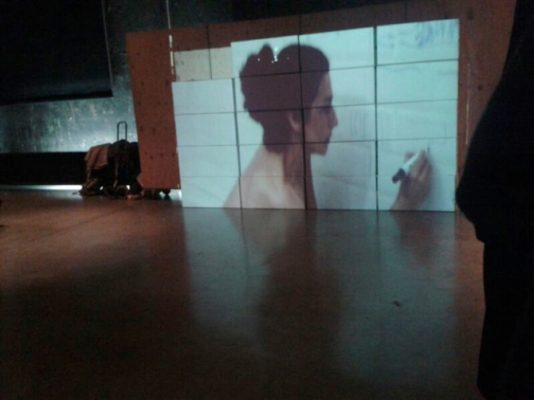Search
To search for an exact match, type the word or phrase you want in quotation marks.
A*DESK has been offering since 2002 contents about criticism and contemporary art. A*DESK has become consolidated thanks to all those who have believed in the project, all those who have followed us, debating, participating and collaborating. Many people have collaborated with A*DESK, and continue to do so. Their efforts, knowledge and belief in the project are what make it grow internationally. At A*DESK we have also generated work for over one hundred professionals in culture, from small collaborations with reviews and classes, to more prolonged and intense collaborations.
At A*DESK we believe in the need for free and universal access to culture and knowledge. We want to carry on being independent, remaining open to more ideas and opinions. If you believe in A*DESK, we need your backing to be able to continue. You can now participate in the project by supporting it. You can choose how much you want to contribute to the project.
You can decide how much you want to bring to the project.

It’s 24 years since the Guerrilla girls collective placed a poster opposite the Metropolitan Museum of New York, protesting that less than 5% of the artists in the Modern Art section were women, while 85% of the nudes were female, denouncing in this way that woman was always represented as an object of desire rather than being considered as a creative subject. Obviously the current situation has changed and today there are many female artists who have gained recognition for their work. However, one finds that the data demonstrates how far we are from reaching a supposed condition of equality: in Madrid only 17 per cent of the exhibitions featured women and according to a report elaborated by MAV, Mujeres en las Artes Visuales (Women in the Visual Arts) in Spain, although 70% of fine art graduates are women, only 30% of them receive grants and support.
The Festival Miradas de Mujer, organised by MAV, says it arose with the aim of visualising and promoting the work of women in the field of the arts. If last year the first festival only took place in Madrid, this year the events have extended across the rest of Spain, with numerous institutions in other communities joining the project, including during the month of March solo and group exhibitions, talks, and performances exploring the work of women in the arts. Including artists as representative as Lara Almárcegui, Eva Lootz, Ouka Leele, Marina Núñez, Marina Abramovic, Concha Jerez, Cristina Lucas, Cristina García Rodero, Isabel Muñoz, Rosalía Banet, María Blanchard, Rosa Barba, Ana Cabello, Carmen Calvo, Soledad Córdoba, Dora García, Marisa González, Candida Höfer, Beth Moysés, Paloma Navares, Mabel Palacín, Eulalia Valldosera and Azucena Vieites.
Rellenando huecos(Filling the gaps) was the audiovisual performance proposed for the opening day of the Festival last 8 March, in the Matadero in Madrid. The work consisted of a video projection made by Maite Cajaraville, an artist who works midway between performance and digital media. In the projected video the artist appeared in a bath, sometimes nude and at other times dressed, drawing on the tiles on the wall, with different scenes being interspersed. The frenzy of the images was accompanied by the electronic music of the producer Nono. A somewhat anodyne projection, that one could say was very much in tune with the festival’s presentation.
Rellenando huecos could also serve to describe what the festival represents. Despite its good intentions and the need for the initiative, the organisation of the project seems to pursue the “Photoespaña model ”, in which on the one hand there are many institutions who participate in order to gain visibility and in the process fill their programme, on the other the festival also incorporates exhibitions that an institution has made on its own initiative, without having the festival in mind, but that end up being included because they coincide with the theme.

Rosa Naharro endeavours to think about the present, considering its distinct contexts, through culture and contemporary art. Looking at exhibitions, writing, reading, film, music and even conversations with friends serve as her tools. Understanding and interpreting “something” of what we call the world becomes a self-obligation, as well as taking a certain stance, that doesn´t distance her from it. She combines writing for A*Desk with writing her doctoral thesis at the UCM and working with cultural management projects.
"A desk is a dangerous place from which to watch the world" (John Le Carré)